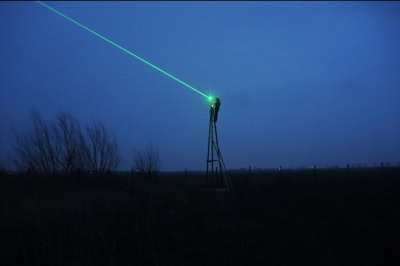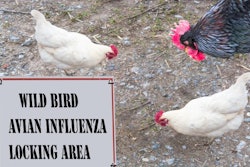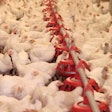
The use of lasers could be an effective way to prevent avian influenza from being introduced into free-range poultry flocks, according to a study.
Speaking during the International Egg Commission webinar, AI Prevention and Innovative Biosecurity Measures -- How the Dutch Egg Industry is Tackling AI, Dr. Armin Elbers, senior epidemiologist at Wageningen University and Research, noted that several different studies have shown that poultry on free-range layer farms have a higher risk of infection from contact with water or soil in the free-range area contaminated by feces from infected wild birds than layers who are kept inside.
But since some wild birds, such as mallards, often visit at night, the farmers may not always notice them when they stop by for a place to swim and eat.
However, with the peak season for bird migration upon us, concerns of more avian influenza outbreaks in the Netherlands are growing.
“We know wild birds will be visiting,” Elbers said. “We’re looking at ways to scare them away. One method is use of a laser as a repellant device for wild birds.”
Past studies involving lasers
As far back as the 1970s, studies were done involving the use of lasers to repel birds. At the time, researchers were looking at ways to scare away wild birds to prevent collisions between birds and aircraft, particularly those on military airfields, Elbers said.
Lasers were also looked at as ways to prevent birds from causing crop damage, as well as for keeping gulls out of landfills and spreading illnesses after they leave the landfills.
The latest research, though, looks at laser use at poultry farms.
Recent research
“Currently, we are or have been working on a farm with an outdoor facility that has been infected by low path avian influenza several times within the last years, so we have made a research design where we are actually counting wild bird visits to the outdoor facility – during time periods with and without the laser in operation,” he explained.
The laser, which emits a strong green light, is mounted on a platform that is six meters above ground. It is elevated to prevent hazards from people looking directly into the laser beam and because with elevation, the laser is able to reach areas several hundred meters away from the laser platform.
There is 24-hour video coverage of the fields, he explained. There are eight wide-angle cameras in the free-range area, which enables the researchers to know what is happening in the entire area. They can see where the birds land, how long they stay there, and also what type of birds visit.
Research shows promise
The preliminary results show that it does keep migratory birds out. Very early in the 28-day trial period, only one mallard visited, and that was only for about a minute. There were no subsequent visits during that observation period.
“It looks very promising in the sense that it seems there is a good effect of the laser,” said Elbers. “But we will try to work on the data in the coming months and will publish that study.”
View our continuing coverage of the global avian influenza situation.


















